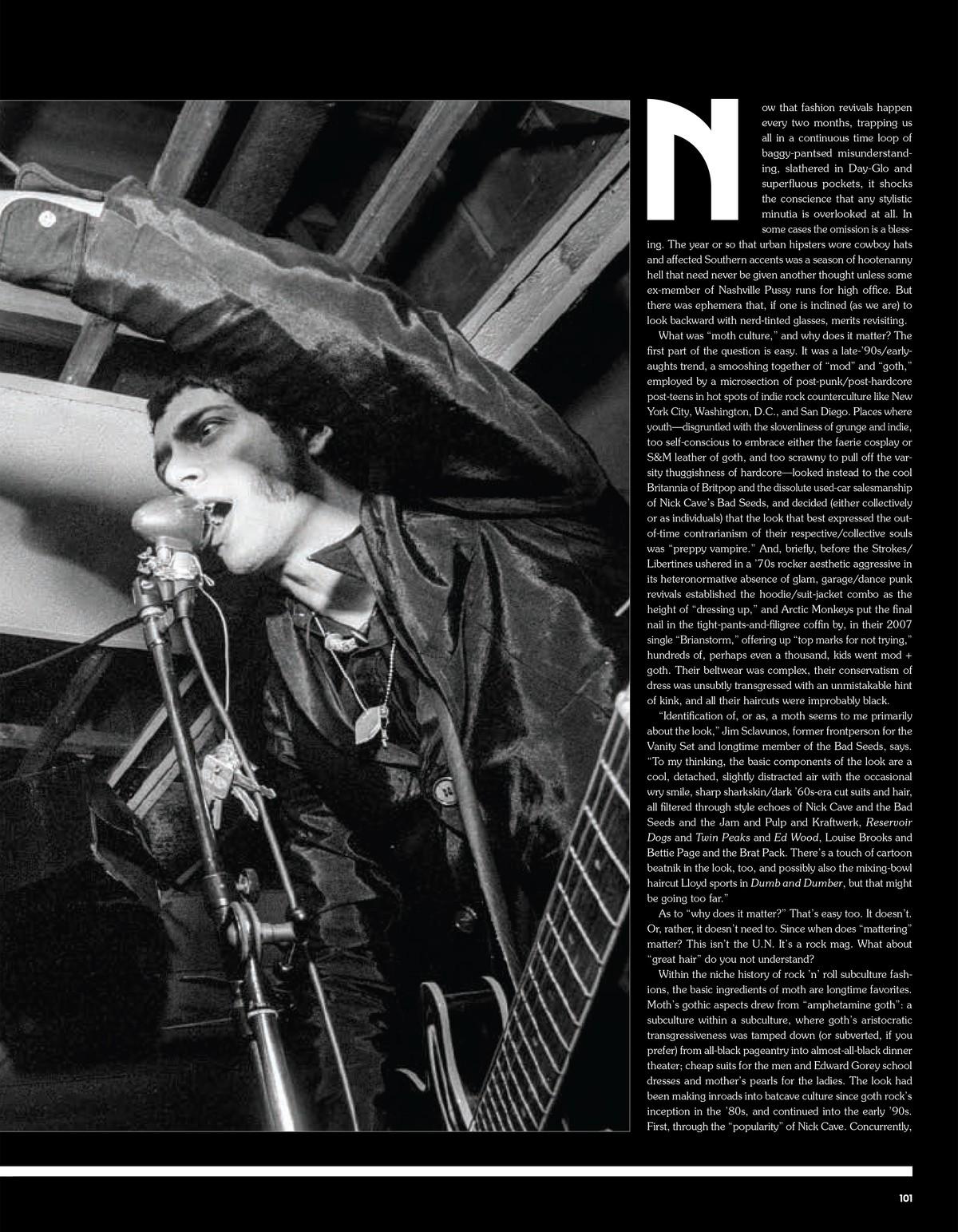Eleganza
LIKE MODS TO A FLAME
Remembering moth, the fad that was too cool to be true.
December 1, 2022


Now that fashion revivals happen every two months, trapping us all in a continuous time loop of baggy-pantsed misunderstanding, slathered in Day-Glo and superfluous pockets, it shocks the conscience that any stylistic minutia is overlooked at all. In some cases the omission is a blessing. The year or so that urban hipsters wore cowboy hats and affected Southern accents was a season of hootenanny hell that need never be given another thought unless some ex-member of Nashville Pussy runs for high office. But there was ephemera that, if one is inclined (as we are) to look backward with nerd-tinted glasses, merits revisiting.

